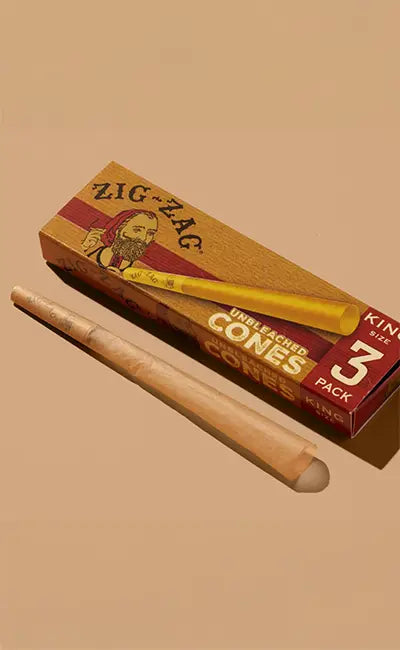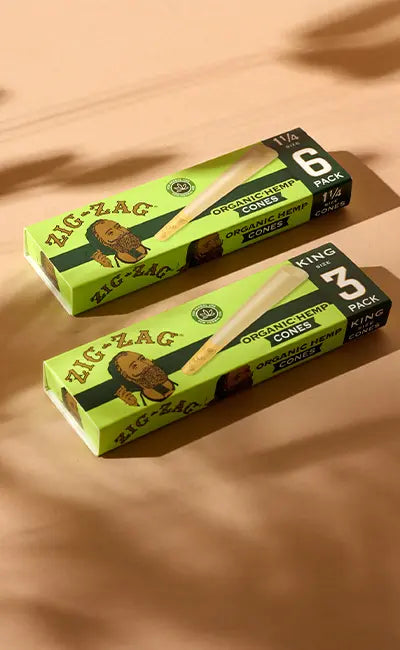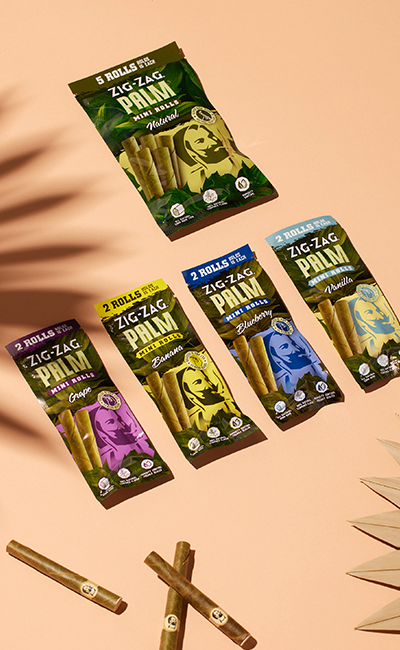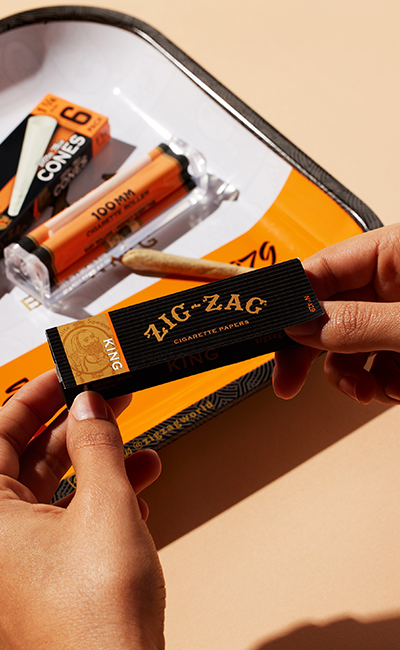Bleached cones have become a staple in the world of smoking for their convenience and ready-to-use design. Unlike traditional rolling papers, these pre-shaped cones are designed for ease, allowing smokers to fill them with their choice of herbs or tobacco without the hassle of rolling. Bleached cones undergo a process to achieve their white appearance, setting them apart from their natural counterparts. This bleaching process not only impacts the aesthetic but also the taste and burn rate of the cone. Their popularity stems from the simplicity they offer, making them a favored choice among both novice and seasoned smokers looking for a quick and easy smoking solution.
The Manufacturing Process of Bleached Cones
Selection of Materials
The initial step in rolling cone manufacturing involves selecting the base material, which can range from hemp paper to wood pulp. The choice of material plays a significant role in the final product's quality, burn rate, and environmental impact. Hemp paper is increasingly favored for its low environmental footprint, offering an eco-friendly option. Conversely, wood pulp is a more traditional choice, known for its versatility and smooth texture. The selection process is crucial, as it lays the foundation for the next steps in manufacturing, directly influencing the smoking experience and sustainability of the bleached cones.
The Bleaching Process
Once the base material is chosen, the bleaching process begins. This step is integral to producing bleached cones, involving various chemicals and techniques to achieve the desired whiteness. The use of chlorine and oxygen-based bleaches is common, each with its implications for the paper's structural integrity and smoker's health. This process not only affects the aesthetic appeal of the cones but also their environmental impact, as the discharge of bleach-related chemicals can pose risks to ecosystems.
Shaping and Cutting
After bleaching, the paper is shaped and cut into the distinctive cone form. This process requires precision to ensure that each
smoking cone meets the standard for size and shape, providing a consistent smoking experience. Advanced machinery folds the bleached paper into cones, which are then cut into various sizes, from king-size cones to smaller ones, catering to diverse smoker preferences. The technology used in this stage has evolved to produce cones with minimal waste, contributing to the efficiency of the manufacturing process.
Quality Control and Safety Standards
This stage involves rigorous testing to ensure that the cones are safe for use, free from defects, and meet the legal requirements for smoking products. Parameters such as the paper burn rate, strength, and absence of harmful residues are closely monitored. Manufacturers must comply with international safety standards to guarantee that the pre-rolls offer not only convenience and consistency but also uphold the highest safety protocols, ensuring a safe and enjoyable experience for the end-user.
Implications of the Bleaching Process
Impact on Paper Burn Rate
The bleaching process, often employed to produce white rolling papers, can significantly affect the burn rate compared to unbleached alternatives, as it alters the paper's natural fibrous structure. This modification may result in a faster or more irregular burn, thus impacting the overall smoking experience. For those who prioritize a smooth, consistent, and slow burn, the variations found in bleached papers could be a concern, leading to a more scrutinous evaluation of their choice, especially in pre-rolled joints. Understanding the influence of bleaching on paper quality becomes crucial for smokers who seek to maintain a particular standard in their smoking sessions.
Health Considerations for Smokers
For smokers, the health implications of inhaling chemicals left behind by the bleaching process, such as chlorine, cannot be overstated. These residues, when combusted and inhaled, pose significant health risks, including respiratory problems and potentially severe long-term effects. As knowledge of these dangers becomes more widespread, there's a growing preference for organic rolling cones, which eschew chemical treatments in favor of natural alternatives. This shift reflects a broader trend towards health-conscious consumption within the smoking community, with individuals increasingly seeking products that minimize their exposure to harmful substances, thereby prioritizing their well-being without compromising the quality of their smoking experience.
Environmental Concerns of Bleaching Chemicals
The use of bleaching chemicals in various industries, including the production of paper, has raised significant environmental concerns. These chemicals can have far-reaching effects on ecosystems and human health. Here's an examination of the primary environmental concerns associated with bleaching chemicals:
-
Water Pollution: The bleaching process often involves chlorine-based chemicals that can lead to the formation of dioxins and other toxic substances. When these chemicals are discharged into water bodies, they can severely contaminate water sources, posing a threat to aquatic life and ecosystems. The persistence of these substances in water can disrupt the natural balance, affecting not only the organisms living in these habitats but also the quality of water available for human consumption and use.
-
Air Pollution: The release of volatile organic compounds (VOCs) during the bleaching process contributes to air pollution, a concern that extends beyond the immediate vicinity of the production sites. These VOCs can travel long distances, affecting wildlife and disrupting natural habitats through the degradation of air quality. A population's exposure to these contaminants can lead to respiratory disorders and other health problems, hence the effect on air quality can also directly affect human health.
-
Soil Contamination: Chemicals used in bleaching processes don't just affect water and air; they can also leach into the soil, leading to soil contamination. This not only affects plant life, potentially altering growth patterns and reducing biodiversity, but it also poses a risk to animals and humans throughout the food chain. Contaminated soil can lead to the accumulation of toxic substances in crops and, consequently, in the animals and humans that consume them, leading to a range of ecological and health consequences.
The environmental concerns surrounding the use of bleaching chemicals emphasize the importance of adopting more eco-friendly and sustainable practices in paper production and other industries. By reducing reliance on these harmful chemicals, it's possible to mitigate their impact on the environment, protecting water sources, air quality, and soil health. This shift not only benefits ecosystems but also supports the well-being of current and future generations, emphasizing the need for ongoing efforts to find and implement safer alternatives.
Comparing with Unbleached, Organic Options
These natural alternatives offer smokers a way to enjoy their habits without the environmental guilt and health worries associated with bleached products.
Unbleached papers maintain their natural color, often a hallmark of sustainable smoking practices, and avoid the use of harsh chemicals. As the industry evolves, the comparison between bleached and unbleached options becomes increasingly relevant.
Sustainable Smoking Practices
The Rise of Hemp
The ascent of hemp and organic materials in the production of rolling cones marks a significant trend towards sustainability within the smoking industry. Hemp, celebrated for its minimal environmental footprint, thrives with less water and fewer pesticides compared to traditional crop cultivation, positioning
hemp rolling cones as a preferred choice among environmentally aware smokers. Similarly, organic rolling cones, crafted from materials cultivated without synthetic fertilizers or pesticides, contribute to reducing the ecological impact associated with smoking accessories. This shift not only appeals to the eco-conscious consumer but also aligns with a broader movement towards sustainable practices, offering a greener alternative without sacrificing quality or experience.
How Manufacturers Are Responding
Manufacturers within the smoking industry are actively adapting to the increased consumer demand for products that are not only high in quality but also environmentally conscious. Here’s a detailed look at the measures they’re implementing:
-
Exploring Alternative Materials: In addition to hemp, there is a growing interest in other resources like bamboo and flax. These materials are praised for their rapid growth rates and low environmental footprint, offering a greener alternative to traditional paper sources without compromising on quality.
-
Improving Manufacturing Processes: Manufacturers are revamping their production methods to minimize environmental harm. This includes reducing water and energy consumption, cutting down on the use of harmful chemicals, and implementing waste management practices to lessen their ecological footprint.
-
Offering Recyclable Packaging: The packaging of rolling papers is also under scrutiny, with brands moving towards recyclable or biodegradable options. This shift not only reduces waste but also aligns with the values of environmentally conscious consumers, further promoting sustainability within the industry.
-
Engaging in Reforestation Projects: Some companies are taking their commitment to the environment a step further by participating in reforestation and conservation efforts. By investing in the restoration of ecosystems, these businesses are helping to counteract the effects of deforestation and contributing to biodiversity preservation.
Through these initiatives, manufacturers are not only responding to consumer demands for more sustainable smoking products but are also taking significant steps toward reducing their environmental impact. This proactive approach highlights a broader industry trend, indicating a promising shift in how smoking products are produced and packaged for the future.
Varieties and Preferences in Smoking Cones
Exploring the Range
The range of available smoking cones spans from king-size cones, which are ideal for group sessions or longer smoking experiences, down to mini cones, perfect for quick, solo uses. This variety ensures that there's a cone for every occasion and preference, making smoking more accessible and enjoyable for everyone. The choice of size significantly influences the smoking experience, with larger cones offering a longer burn time and greater capacity, while smaller ones provide a quicker, more discreet option.
Pre-roll Papers and Convenience for Smokers
As emphasized before, pre-roll papers have revolutionized the smoking industry by providing unmatched convenience. These pre-formed cones eliminate the need for manual rolling, making them a popular choice among both novices and experienced smokers alike. This means that enjoying a smoke is now more accessible than ever, removing barriers to entry for those who may have been intimidated by the prospect of rolling their own.
Customizing the Smoking Experience
Customization is a key trend in the world of smoking cones, with consumers seeking ways to make their smoking experience uniquely their own. Beyond just the type of cone, smokers can choose from a variety of flavors, materials, and even colored papers, allowing for a highly personalized smoking session. This level of customization not only enhances the enjoyment of the product but also allows individuals to express their personality through their choice of smoking accessories.
Making Informed Choices as a Consumer
Understanding the Impact of Your Smoking Products
Awareness of the impact your smoking products have on both health and the environment is the first step toward making informed choices. Consumers are now looking beyond just the immediate pleasure of smoking. This awareness encourages a shift towards products that minimize harm, influencing manufacturers to adapt their offerings accordingly.
Where to Find Sustainable Smoking Products
Many retailers and brands now highlight the health aspects of their products, catering to the informed consumer. Online platforms and specialized stores offer a wide selection of eco-friendly smoking alternatives, making it convenient for consumers to choose products that align with their values. As the market evolves, the availability of information and transparency from brands on these impacts of their products will further empower consumers to make choices that reflect their concerns for health and sustainability.
The shift towards healthier, sustainable choices in smoking products is more than a trend; it's a reflection of a changing world. As we move forward, this shift promises not only to enhance the smoking experience but also to contribute to a healthier future. It's a journey that requires the participation of both consumers and manufacturers, working together towards a common goal of well-being and environmental respect. The future of smoking products is bright, guided by innovation, responsibility, and a deep-seated commitment to making positive changes for the health of individuals and the planet.














